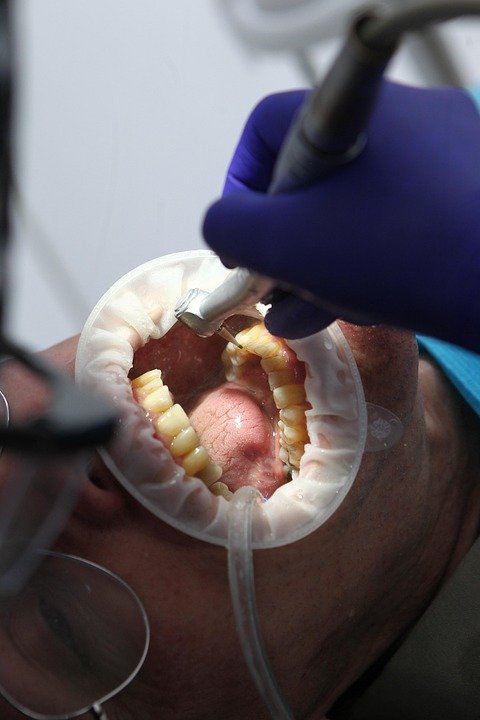How can a dentist improve their website’s ranking on Google?
Okay, so I’m Dr. Emily Carter, and I own a small dental practice in Austin, Texas called "Austin Smiles Dental." I built a website a few years ago, but it’s just not bringing in the patients I hoped it would. I keep hearing about SEO, but honestly, I’m overwhelmed. I want to rank higher on Google when people search for things like "dentist Austin," "teeth whitening Austin," "emergency dentist Austin TX," or even just "best dentist near me."
My website is austinsmilesdental.com (not a real URL, obviously!), and it has the basic information: our services (general dentistry, cosmetic dentistry, implants, etc.), team bios, contact info, a blog I try to keep updated, and a patient testimonial page.
What specific, actionable steps can I take to improve my website’s ranking on Google? I’m not super tech-savvy, so please explain things in a way I can understand. Are there specific tools I should be using? What kind of content should I be creating? And how long does it typically take to see results? I’m also concerned about staying compliant with HIPAA and other regulations when it comes to online marketing.
Answer
To improve a dental website’s ranking on Google, a dentist needs to focus on a multifaceted approach encompassing on-page optimization, off-page optimization, technical SEO, local SEO, content marketing, and user experience. The strategies are interconnected and contribute to a website that is both search engine-friendly and user-centric.
1. On-Page Optimization:
- Keyword Research: Identify relevant keywords patients use when searching for dental services. Utilize tools like Google Keyword Planner, Ahrefs, SEMrush, or Moz Keyword Explorer. Focus on keywords related to specific procedures (e.g., "teeth whitening"), location-based searches (e.g., "dentist near me"), and problem-based searches (e.g., "toothache relief"). Group keywords into related themes for content creation.
- Title Tags: Each page should have a unique title tag that accurately reflects the content and includes primary keywords. Keep them under 60 characters to avoid truncation in search results. For example: "Cosmetic Dentist | [Your Practice Name] | [Your City, State]".
- Meta Descriptions: Write compelling meta descriptions (under 160 characters) that summarize the page content and entice users to click. Include relevant keywords and a call to action. Although Google doesn’t always use them for ranking, they heavily influence click-through rates.
- Header Tags (H1-H6): Structure content using header tags to create a clear hierarchy. Use H1 tags for the main page title and H2-H6 tags for subheadings. Incorporate relevant keywords naturally within the headers. Only use one H1 tag per page.
- Content Optimization: Create high-quality, informative, and engaging content that addresses user search intent. Incorporate target keywords naturally throughout the text. Avoid keyword stuffing. Focus on providing value to visitors by answering their questions, addressing their concerns, and educating them about dental health. Content should be unique and original; avoid duplicate content.
- Image Optimization: Optimize images by compressing them for faster loading speeds, using descriptive file names (e.g., "teeth-whitening-before-after.jpg"), and adding relevant alt text (alternative text) that describes the image for search engines and visually impaired users. Alt text should incorporate relevant keywords.
- Internal Linking: Link relevant pages within your website to improve navigation and distribute link juice (authority) throughout the site. Use descriptive anchor text (the clickable text in the link). For example, link from a page about teeth whitening to a page about cosmetic dentistry services.
- Mobile-Friendliness: Ensure the website is responsive and provides a seamless experience across all devices (desktops, tablets, and smartphones). Use Google’s Mobile-Friendly Test tool to identify and fix any mobile usability issues. A mobile-friendly website is a ranking factor.
- Page Speed: Optimize website loading speed by compressing images, leveraging browser caching, minimizing HTTP requests, and using a content delivery network (CDN). Use Google’s PageSpeed Insights tool to identify and address speed-related issues. Faster loading speeds improve user experience and are a ranking factor.
2. Off-Page Optimization:
- Link Building: Acquire high-quality backlinks from reputable and relevant websites. Focus on earning links naturally through valuable content and outreach. Avoid participating in link schemes or buying links, as this can result in penalties. Link building strategies include:
- Directory Submissions: Submit the website to relevant online directories (e.g., Yelp, Healthgrades, Zocdoc). Ensure the NAP (Name, Address, Phone number) information is consistent across all listings.
- Guest Blogging: Write guest posts for other dental or health-related websites and include a link back to your site in the author bio.
- Broken Link Building: Identify broken links on other websites and offer your content as a replacement.
- Resource Page Linking: Identify resource pages related to dentistry and request that your website be added as a valuable resource.
- Local Partnerships: Partner with other local businesses (e.g., doctors, pharmacies) and cross-promote each other’s websites.
- Social Media Marketing: Build a presence on relevant social media platforms (e.g., Facebook, Instagram, Twitter, LinkedIn). Share valuable content, engage with followers, and promote your services. While social signals are not a direct ranking factor, they can drive traffic to your website and increase brand awareness.
- Online Reputation Management: Monitor online reviews on sites like Google, Yelp, and Healthgrades. Respond to both positive and negative reviews in a timely and professional manner. Encourage satisfied patients to leave reviews. Positive reviews can improve your online reputation and attract new patients.
3. Technical SEO:
- XML Sitemap: Create an XML sitemap and submit it to Google Search Console. This helps Google crawl and index all the pages on your website.
- Robots.txt: Use a robots.txt file to control which pages search engine crawlers can access. This can prevent indexing of duplicate content or sensitive pages.
- Schema Markup: Implement structured data markup (schema) to provide search engines with more information about your website and content. This can enhance search results with rich snippets, such as reviews, prices, and contact information. Schema can be implemented for services, location, articles, and more.
- HTTPS: Ensure the website is secured with HTTPS (SSL certificate). This protects user data and is a ranking factor.
- Canonical Tags: Use canonical tags to specify the preferred version of a page if there are multiple URLs with similar content. This helps prevent duplicate content issues.
- Website Architecture: Design a clear and logical website architecture that is easy for users and search engines to navigate. Use a flat site structure, where important pages are accessible within a few clicks from the homepage.
- Crawl Errors: Regularly check Google Search Console for crawl errors and fix any issues that prevent Google from crawling and indexing your website.
- Redirects: Implement 301 redirects for any broken or moved pages to ensure users and search engines are directed to the correct page.
4. Local SEO:
- Google Business Profile (GBP): Claim and optimize your Google Business Profile. Provide accurate and complete information, including your business name, address, phone number, website URL, hours of operation, and services offered. Choose relevant categories for your business.
- NAP Citations: Ensure your NAP (Name, Address, Phone number) information is consistent across all online directories and citations. Inconsistencies can confuse search engines and negatively impact your local ranking.
- Local Keyword Optimization: Incorporate local keywords into your website content, title tags, meta descriptions, and header tags. For example, "dentist in [Your City]" or "emergency dentist [Your City, State]".
- Local Link Building: Obtain backlinks from other local businesses and organizations.
- Google Maps Optimization: Ensure your Google Business Profile is properly linked to your website and accurately placed on Google Maps.
- Service Area: Clearly define the service areas you cover in your Google Business Profile and website content.
5. Content Marketing:
- Blog: Create a blog and regularly publish high-quality, informative, and engaging content related to dental health, procedures, and services. This helps attract new visitors, establish your expertise, and improve your website’s ranking for relevant keywords.
- Videos: Create videos showcasing your practice, services, and patient testimonials. Upload videos to YouTube and embed them on your website.
- Infographics: Create visually appealing infographics that present dental health information in an easy-to-understand format.
- E-books and Guides: Offer free e-books or guides on topics related to dental health in exchange for email addresses. This helps build your email list and nurture leads.
- Case Studies: Showcase successful dental treatments and patient outcomes with case studies.
- Content Calendar: Develop a content calendar to plan and schedule content creation and promotion.
6. User Experience (UX):
- Website Navigation: Ensure the website is easy to navigate and users can find the information they need quickly. Use clear and concise menus and a logical site structure.
- Call to Action (CTA): Include clear and prominent CTAs throughout the website, encouraging visitors to book an appointment, contact your office, or learn more about your services.
- Website Design: Create a visually appealing and professional website design that reflects your brand and builds trust with visitors.
- Accessibility: Ensure the website is accessible to users with disabilities by following accessibility guidelines (WCAG).
- Contact Information: Make it easy for visitors to contact your office by prominently displaying your phone number, address, and email address on every page. Include a contact form for easy inquiries.
- Testimonials: Feature positive patient testimonials on your website to build trust and credibility.
- Security: Ensure the website is secure and protects user data. Display security badges or certifications to reassure visitors.
- Live Chat: Consider adding a live chat feature to provide instant support and answer questions from visitors.
By implementing these strategies, a dentist can significantly improve their website’s ranking on Google, attract more patients, and grow their practice. It’s important to remember that SEO is an ongoing process and requires continuous effort and adaptation to Google’s algorithm updates. Monitoring website traffic, keyword rankings, and conversion rates is crucial to measure the effectiveness of your SEO efforts and make necessary adjustments.


Post Comment